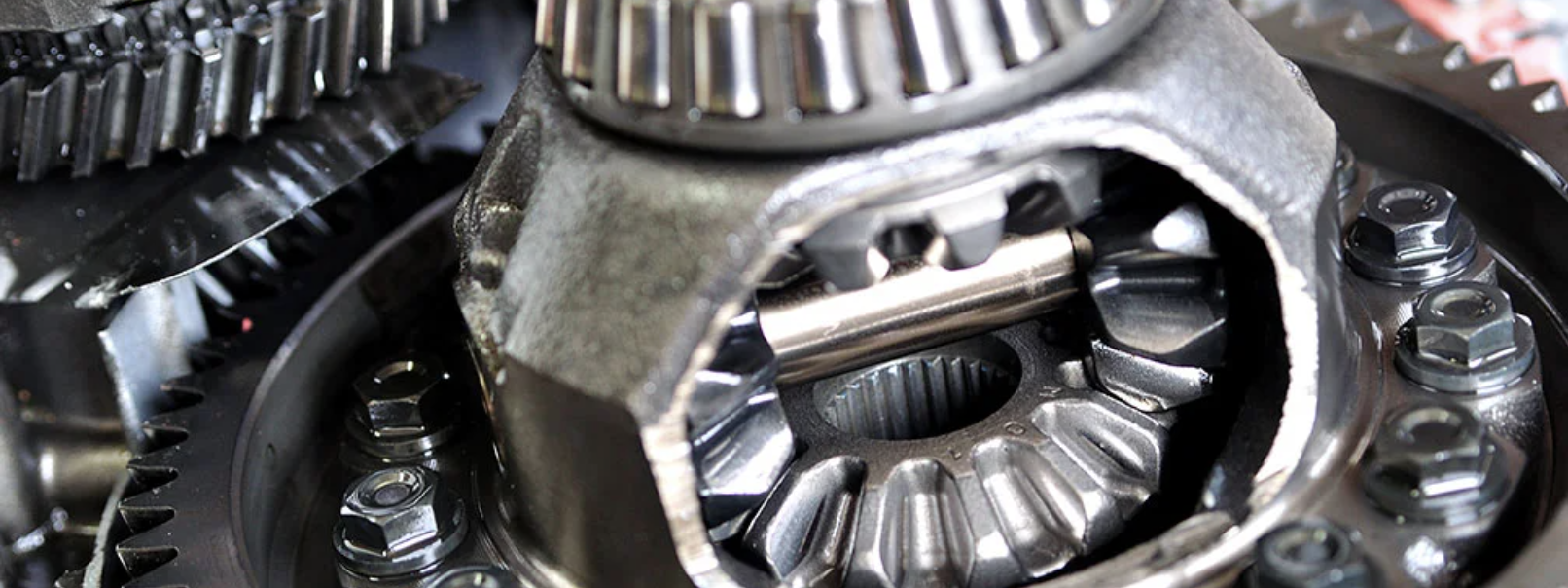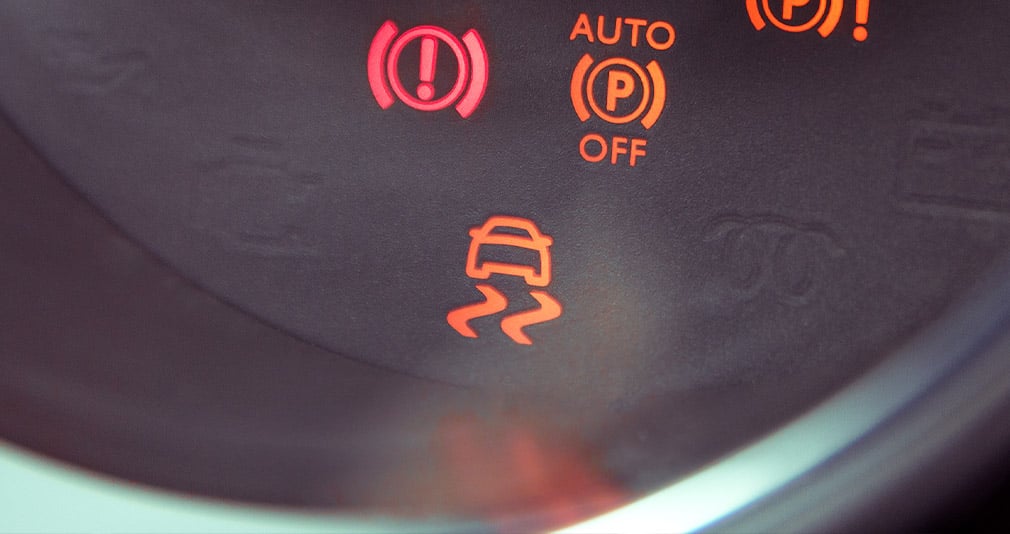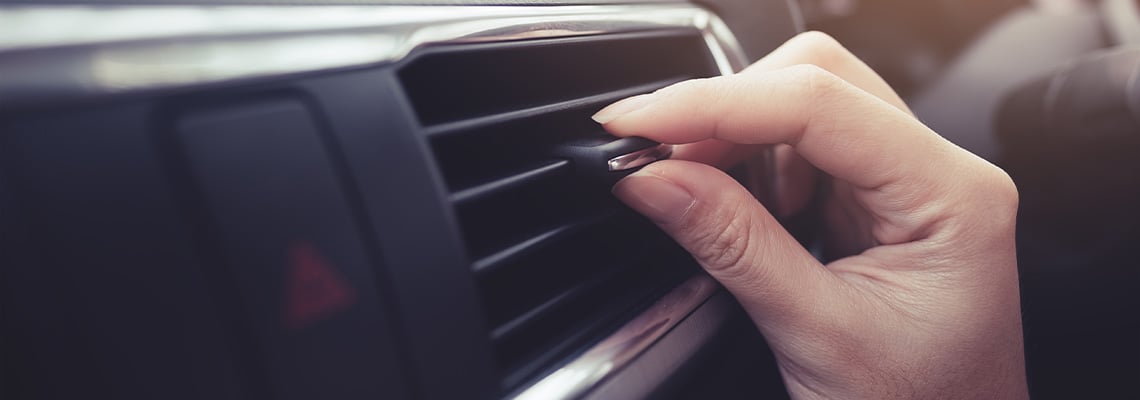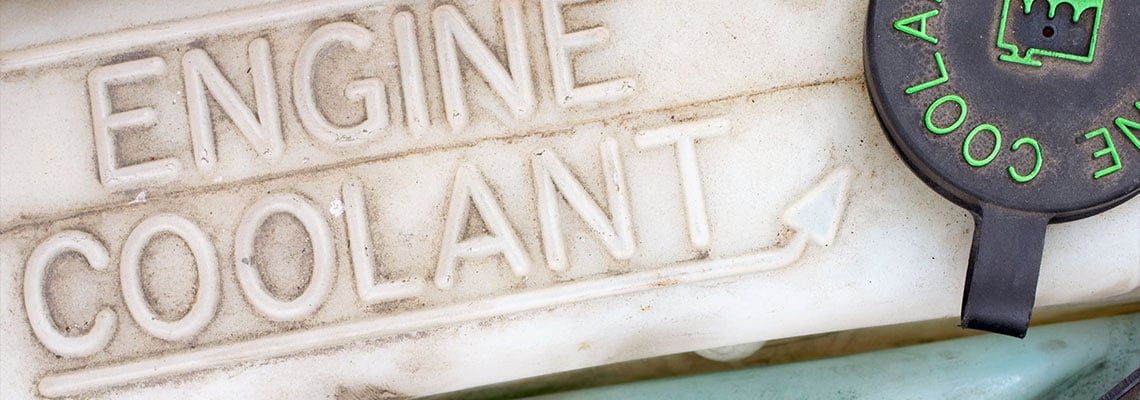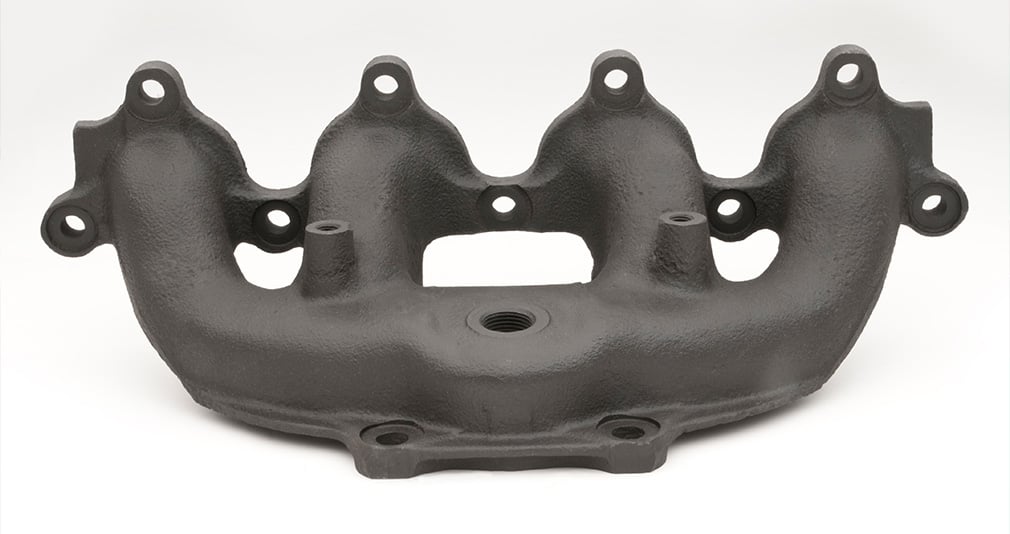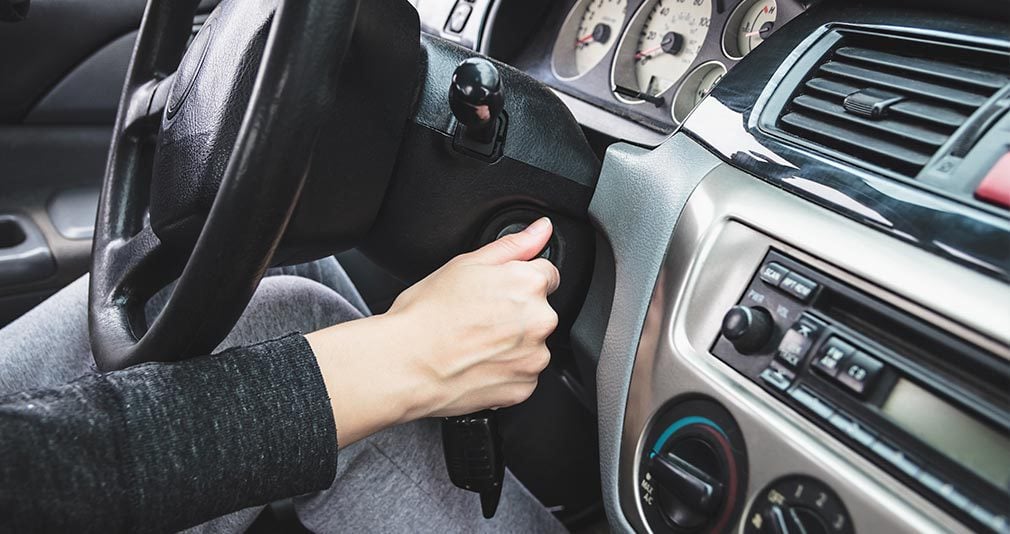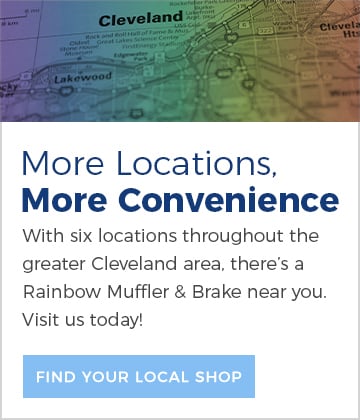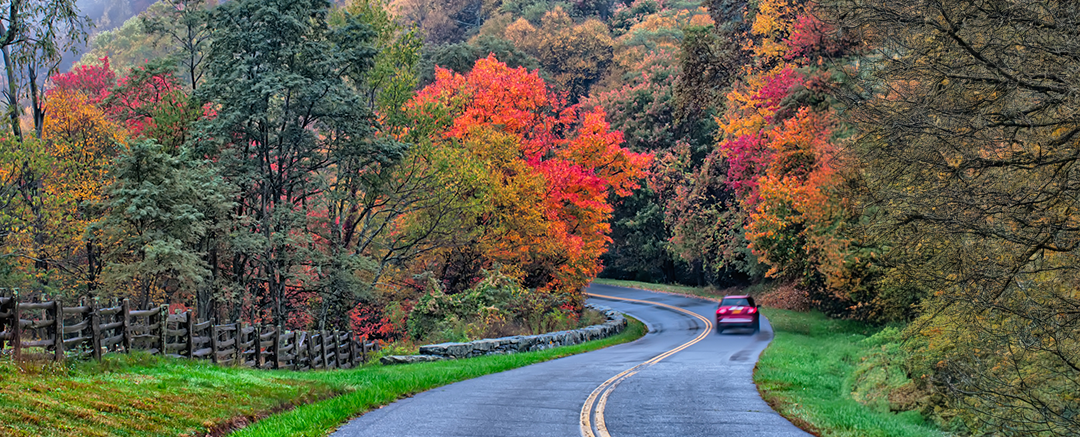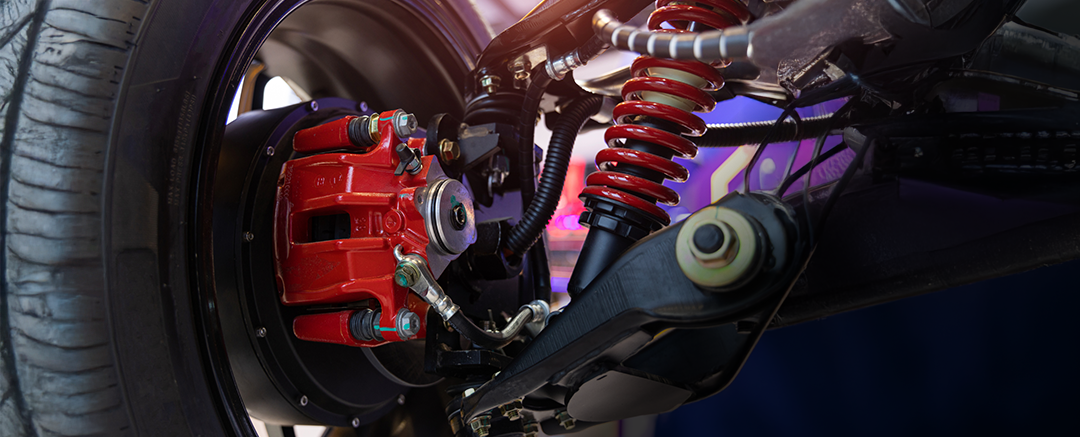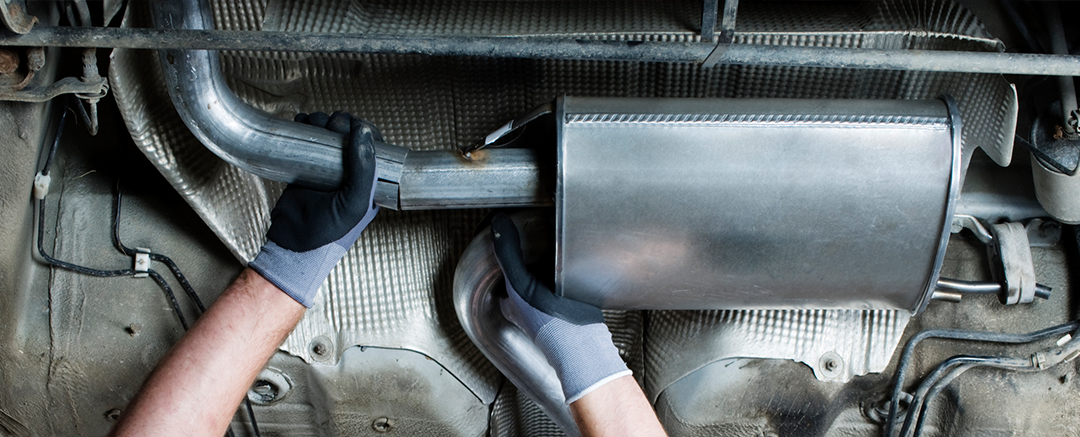Turning is essential to driving, and your differential is essential to turning. That’s why maintenance of this part of your vehicle is crucial. But what does a differential do anyway? Think about it like this: Because the wheels of a car spin at different speeds, and while turning, travel different distances, your car needs to compensate in order to make a turn. (The wheels on the inside of the turn have to spin slower and travel a shorter distance, while the wheels on the outside of the turn need to spin faster to travel a greater distance.) Your car’s differential is the device that directs power to the wheels and controls the speed of some or all of the wheels, enabling your car to turn without putting too much strain on its axles.
Without a differential, the wheels on your car that are connected to its power — the front two wheels on a front-wheel drive vehicle or all four wheels on an all-wheel drive vehicle — would all receive the same amount of power. If you were to turn your car without a differential, those connected wheels would continue to spin at the same speed, making turns incredibly difficult and wearing on your car.
Let’s look at the different types of differentials and how often they need to be serviced to keep your vehicle running safely and smoothly
The Differential’s Location
Front-Wheel Drive: On a car with front-wheel drive, the differential — called a transaxle — is located on the front axle between the two front wheels and is connected to the engine and transmission.
Rear-Wheel Drive: On a car with rear-wheel drive, the differential is located on the rear wheel axle and is connected to the transmission and engine by the drive shaft that runs up the underside of the car between the front and rear axles.
All-Wheel Drive: On a car with all-wheel drive (AWD), there are three differentials: a center differential located on the drive shaft in the center of the car’s underside, a rear differential on the rear axle and a front differential on the front axle near the engine. An AWD vehicle can apply more power to any wheel, usually the one with least resistance.
Four-wheel drive: A four-wheel drive vehicle employs different differential setups than an all-wheel drive vehicle, and locks the front and wheel axles together, applying power equally to both front and back axles. While this is good for low-traction conditions, it’s not great for dry pavement navigation, and dry conditions can cause unnecessary stress on the vehicle.
Types of Differentials
Open differential: An open differential is the simplest type of differential. It sends the same amount of torque to each of the four wheels. In good conditions, the engine and gearing determine how much torque is applied.
For any vehicle, if ground conditions are poor, your torque will be limited by how fast the tires can spin without slipping. If you continue to press the accelerator after the tires start slipping, your wheels will spin faster, but you will have lost traction with the ground.
An open differential is less effective in icy conditions. Let’s say one of your wheels hits a patch of ice while the others are on good ground. Just a little too much torque will cause your tire to slip on the ice, which will slow the amount of torque that will be sent to all four tires, slowing your entire vehicle. It may even stop all forward motion, leaving you stuck.
In an off-road situation, even in a four-wheel drive vehicle, you could easily get stuck if your vehicle has an open differential on the front and back axles, especially if one of the four tires comes off the ground.
Limited slip differential: Addressing some of the problems of an open differential, a limited slip differential (LSD) allows normal differential action while your car is making a turn. So when a wheel slips, an LSD allows torque to be shifted to the non-slipping wheel.
There are several types of limited slip differentials:
- Clutch-type LSD: This most common type of LSD contains many of the same elements as an open differential, but adds a set of clutches and a spring pack. This type is good for the situation discussed above (one tire on ice and the others on good ground) because it will allow your car to move forward, just with less power than normal.
- Viscous coupling: All-wheel-drive vehicles often have this type of LSD. It can link your car’s back wheels to the front ones, which transfers torque from a set of wheels that is slipping to a set that may not be slipping.
- Locking differential: Many off-road vehicles have this type of LSD. Containing the same elements as an open differential, a locking differential also includes a mechanism to lock the two output pinions together. You’ll activate the mechanism with a switch that will cause both wheels to spin at the same speed, regardless of traction.
- Torsen differential: High-performance all-wheel-drive vehicles tend to have this kind of LSD. Torsen stands for Torque Sensing, and unlike other types of differentials, the Torsen contains no clutches, viscous fluid or electronics. When it senses a loss in torque to one wheel due to lost traction, it will allow more power to shift to the non-slipping wheel. However, if one set of wheels completely loses traction, this type of differential will not be able to send power to the other set of wheels.
Caring for Your Car’s Differentials
Your car cannot function without a working differential, so it’s very important to have this part inspected during a vehicle maintenance appointment with Rainbow Muffler certified technicians to see if it’s time for a rear differential service, a front differential service or both.
Proper lubrication is critical to keeping your vehicle’s differentials working in top condition. Many of the parts, gears and bearings in a vehicle’s differential require differential fluid to work smoothly, and some differentials require geal oil to keep the drive parts cool. Rainbow Muffler certified technicians will drain used differential fluid and replace it with clean fluid. They’ll also install any additives recommended by your car manufacturer.
If your steering wheel pulls or you have trouble controlling the speed or direction of your vehicle, you should have your steering and suspension system inspected. If you experience any of the problems below, you should schedule a differential service inspection with Rainbow Muffler:
- A clunking noise
- A howling noise while accelerating
- A whirring noise at speeds higher than 15 miles per hour, or while slowing down
- A rumbling sound at speeds higher than 15 miles per hour
- A banging or skipping sensation while turning corners
Front-wheel drive differentials need more frequent servicing than rear-wheel drive differentials. And drivers who take dirt roads or cross water regularly may need their differential serviced more often compared to drivers who mostly stick to paved highways.
Every car maker has its own guidelines for servicing frequency, so check your vehicle’s manual — and talk to a Rainbow Muffler certified technician. While the average cost of rear differential service varies, you can contact Rainbow Muffler for more information before your appointment.

